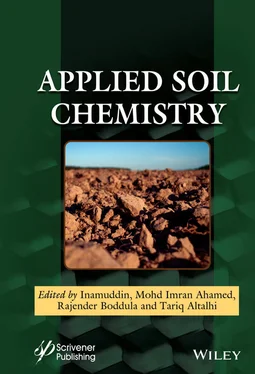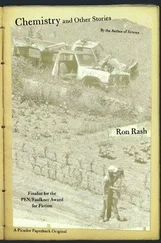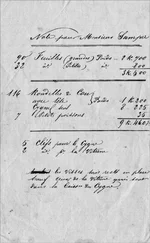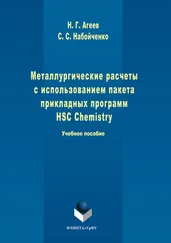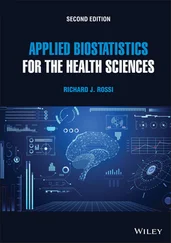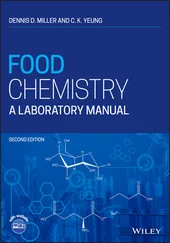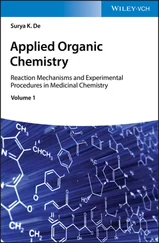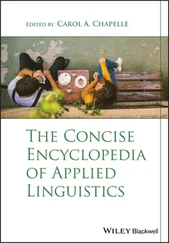153 150
154 151
155 152
156 153
157 154
158 155
159 156
160 157
161 158
162 159
163 160
164 161
165 162
166 163
167 165
168 166
169 167
170 168
171 169
172 170
173 171
174 172
175 173
176 174
177 175
178 176
179 177
180 178
181 179
182 180
183 181
184 183
185 184
186 185
187 186
188 187
189 188
190 189
191 190
192 191
193 192
194 193
195 194
196 195
197 196
198 197
199 198
200 199
201 200
202 201
203 202
204 203
205 204
206 205
207 206
208 207
209 208
210 209
211 210
212 211
213 212
214 213
215 214
216 215
217 216
218 217
219 218
220 219
221 220
222 221
223 222
224 223
225 224
226 225
227 226
228 227
229 228
230 229
231 230
232 231
233 232
234 233
235 235
236 236
237 237
238 238
239 239
240 240
241 241
242 242
243 243
244 244
245 245
246 246
247 247
248 248
249 249
250 250
251 251
252 252
253 253
254 254
255 255
256 256
257 257
258 258
259 259
260 260
261 261
262 262
263 263
264 264
Scrivener Publishing
100 Cummings Center, Suite 541J
Beverly, MA 01915-6106
Publishers at Scrivener
Martin Scrivener ( martin@scrivenerpublishing.com)
Phillip Carmical ( pcarmical@scrivenerpublishing.com)
Edited by
Inamuddin
Department of Applied Chemistry, Aligarh Muslim University, Aligarh, India
Mohd Imran Ahamed
Department of Chemistry, Aligarh Muslim University, Aligarh, India
Rajender Boddula
National Center for Nanoscience and Technology, Beijing, China
and
Tariq Altalhi
Department of Chemistry, College of Science, Taif University, Taif, Saudi Arabia

This edition first published 2021 by John Wiley & Sons, Inc., 111 River Street, Hoboken, NJ 07030, USA and Scrivener Publishing LLC, 100 Cummings Center, Suite 541J, Beverly, MA 01915, USA
© 2021 Scrivener Publishing LLC
For more information about Scrivener publications please visit www.scrivenerpublishing.com.
All rights reserved. No part of this publication may be reproduced, stored in a retrieval system, or transmitted, in any form or by any means, electronic, mechanical, photocopying, recording, or otherwise, except as permitted by law. Advice on how to obtain permission to reuse material from this title is available at http://www.wiley.com/go/permissions.
Wiley Global Headquarters
111 River Street, Hoboken, NJ 07030, USA
For details of our global editorial offices, customer services, and more information about Wiley products visit us at www.wiley.com.
Limit of Liability/Disclaimer of Warranty
While the publisher and authors have used their best efforts in preparing this work, they make no representations or warranties with respect to the accuracy or completeness of the contents of this work and specifically disclaim all warranties, including without limitation any implied warranties of merchant- ability or fitness for a particular purpose. No warranty may be created or extended by sales representatives, written sales materials, or promotional statements for this work. The fact that an organization, website, or product is referred to in this work as a citation and/or potential source of further information does not mean that the publisher and authors endorse the information or services the organization, website, or product may provide or recommendations it may make. This work is sold with the understanding that the publisher is not engaged in rendering professional services. The advice and strategies contained herein may not be suitable for your situation. You should consult with a specialist where appropriate. Neither the publisher nor authors shall be liable for any loss of profit or any other commercial damages, including but not limited to special, incidental, consequential, or other damages. Further, readers should be aware that websites listed in this work may have changed or disappeared between when this work was written and when it is read.
Library of Congress Cataloging-in-Publication Data
ISBN 978-1-119-71018-9
Cover image: Pixabay.Com
Cover design by Russell Richardson
Set in size of 11pt and Minion Pro by Manila Typesetting Company, Makati, Philippines
Printed in the USA
10 9 8 7 6 5 4 3 2 1
Soil chemistry refers to the chemical reactions in soils that affect the growth and nutrition of plants. Applied soil chemistry is an interdisciplinary field covering soil, water, plants and atmosphere, which impacts plant, animal and human health. Water and nutrients are provided in different types of soil that are home to microorganisms and many other creatures and plants. The properties of these soils affect the crop production of agricultural fields; therefore, this discipline provides support to the sustainable agricultural management of soils.
State-of-the-art information regarding applied soil sciences is explored in this book. In addition to the fundamentals of soil chemistry, model concepts, principles, chemical reactions, functions, chemical recycling, chemical weathering, acid-base chemistry, carbon sequestration, and nutrient availability of soils are highlighted. Also included among the topics are the chemistry of heavy metals in soil environments, ion-exchange processes on clay, along with relevant analytical tools and applications. This book will help the reader understand soil characteristics by targeting soil chemical reactions and interactions and their applications. Since the chapters were written by noted professionals in the field, it will be an excellent reference guide for students, faculty, researchers and professionals in the field of environmental science, earth science, soil chemistry, and agroecology. The subject matter covered in each chapter is summarized below.
Chapter 1provides details on the significance of soils as a carbon store. Retaining and ideally boosting carbon in soils helps to inhibit its buildup in the atmosphere. It takes some time for soil carbon to become mineralized, whereas soil erosion and tillage continuously release some soil carbon into the atmosphere.
Chapter 2provides background information on the chemical weathering of minerals. A discussion of the weathering sequence of minerals from the soil mainly sheds light on the factors which control the rate of chemical weathering, including temperature and time factors, biotic process, oxidation, reduction, comparative stability of various minerals, water, leaching, and acidity.
Chapter 3discusses the effect that agricultural management systems have on soil health by evaluating reduced processing systems, organic fertilizers, and biological control of weeds, along with their effect on the bioeconomy, including agriculture, forestry, fishing, aquaculture, woodworking, biorefineries, and nanobiotechnology. The data provided is based on the evaluation of indicators of physical, chemical, biological, microbiological, and biochemical soil health. The benefits of soil resilience and better adaptation to extreme events are also included.
Читать дальше
